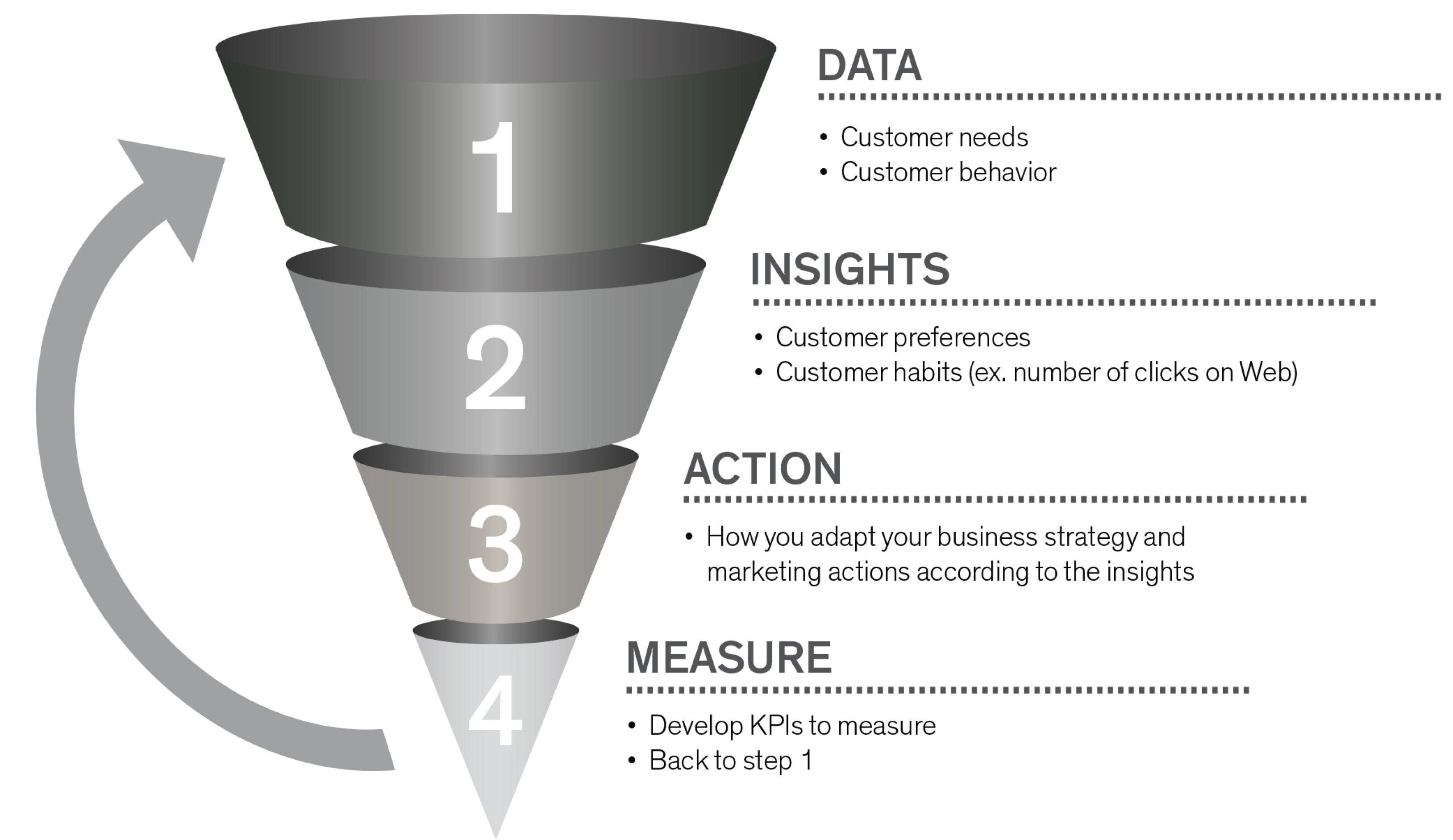Rethinking retail: A new customer focus that delivers results
In today’s highly competitive retail environment, using customer-centric metrics is the best way to adapt marketing strategies so as to maximize sales. This is the idea presented by Simon Tooley, the owner of Etiket, Fabiana Pereira, the founder and CMO of FameDrop, and Rami Karam, the co-founder of Thirdshelf. These business experts explain how merchants must review their way of assessing performance by making the customer the central focus in their decision-making.
Make the customer a primary concern of the business
In recent years, due to the widespread use of social media, ever-growing customer demands and the highly competitive retail environment, power has clearly shifted into the hands of consumers. Business strategies which are supported by a measurement system tailored to this new reality must be put in place. One possible strategy involves choosing a relational approach as opposed to a transaction-based approach, while establishing and maintaining a long-term relationship that is both measurable and profitable. According to Simon Tooley, in order to boost sales, the emphasis should be on the customer, who must be a “central focus of concern”. Fabiana Pereira concurs, arguing that “the customer experience is very important in an increasingly competitive environment.” Rami Karam explains that “the idea is also to make investments so as to retain, rather than merely acquire, the customer”!
The digital revolution is providing a plethora of data and a wealth of opportunities
Merchants must therefore make the most of the data at their disposal and be open to the available opportunities, such as developing much more personal customer relationships. Rami Karam points out that there are two types of data: traditional data, which in the past has been used as the basis of calculating performance indicators (such as sales per square foot or the average customer purchase), and data based on customer buying habits, which is much more useful. Although the immediate impacts of a marketing strategy based directly on this type of information are quite obvious (among other things, such a strategy makes it possible to establish the typical behaviour of a specific consumer), developing such a strategy is not without its challenges. In fact, one of the issues traditional retailers are currently faced with is the lack of customer data: only 20% of purchases are associated with a customer. This makes it difficult to have targeted advertising, to know the customer and to develop a long-term relationship with that person, all of which are of fundamental importance according to Rami Karam.
Moving from a “project-oriented” approach to a “customer-centric” vision
How can a new customer-focused approach be adopted? Many companies operating in a variety of sectors, notably technology companies, have long understood the principle that revolutionized their modus operandi. The Salesforce customer relationship management platform is a perfect example. “Software developers decided to change paradigm a few years ago, shifting from a “project-oriented” approach to a “customer-centric” vision, according to Mr. Karam. Why? Simply because developing long-term customer relationships provides profits—at least up to the company’s breakeven point. A well-executed strategy will provide long-term benefits in terms of company profitability but will also make it possible to have a much greater return on investment from various marketing initiatives. In fact, there are many business intelligence solutions that require no major investments and that make it possible for a company to make the most of digital data and traditional indicators. With the democratization of new technology, these inexpensive solutions may be very useful to retailers, allowing them to maximize their customer knowledge and optimize customer relationships.
Measure, maximize and optimize the customer relationship
Fabiana Pereira believes that knowing the customer is the keystone of any business strategy: “data provides the necessary assurances to try innovative new strategies. It provides the necessary justification to move forward. That is the power of data,” she specifies. However, she also adds a caveat: “consumers are not averages. This is not where opportunities may be seized.” The goal is to create intelligible profiles and, especially, profiles that will be useful in the long term. To leave its mark, a company must be alive and must connect with its customers, says Ms. Pereira. To do so, it is important to segment and differentiate customers so that the company is able to address their needs appropriately…and “pamper them properly”. She ends by saying that “our goal is to secure customer loyalty to the brand”. Simon Tooley concurs: the challenge is building and maintaining customer trust. Moreover, in his view, this guarantees a solid customer relationship, “the conversion rate depends not only on customer service, but also on the creation of a relationship based on trust.”
Optimizing indicators
For Rami Karam, the key ingredients of such an approach-one which focuses on useful data that produces results-are based on solid foundations. To achieve this optimum result, he proposes the following process: retailers must first gather data that is as accurate and as customer specific as possible. They should then convert this data into customer insights which will serve as the basis of any strategic action to be taken by the business. Finally, this action must generate key success indicators that will help to make any necessary adjustments or to provide additional data to support decision-making and guide the company’s strategic and marketing efforts.
The four steps to create understandable customer profiles

Data is an essential tool for retailers. It is important to remember that customers are, as Rami Karam describes them, moving targets. This means that retailers must move with them. As Simon Tooley summarizes: “always remember that it is the people who make the business.”
